When this French artist decided to take a completely new approach to paint, he revolutionized the world of art in the mid-19th century.
Gustave Courbet (1819-1877) was a painter who depicted only what he could perceive. This was quite different from the paintings that were displayed at the Paris Salon at the time.
It took a while but he eventually earned recognition with his new approach and he became the leading Realism artist of his generation.
Let’s take a closer look at some of the most interesting facts about After Dinner at Ornans, one of the early masterpieces of Courbet.
1. It was painted during the cold winter months of the late 1840s
Jean Désiré Gustave Courbet was born on Jue 10, 1819, in the small French town of Ornans in the utmost eastern part of France.
His artistic talent was clear from a young age and this allowed him to move to Paris in the late 1830s to pursue an artistic career.
He briefly studied in a local studio but this didn’t last long because of his individualistic nature. He struggled to find his artistic purpose initially but this quickly changed.
He decided that he only wanted to paint what he could observe, regardless of the fact that historical and mythological paintings were the most popular at the time.
Courbet completed After Dinner at Ornans in the winter of 1848-1849 during one of his visits to his hometown near the Swiss border.

2. It depicts a scene that took place in Courbet’s hometown

As the name of the painting suggests, it depicts a scene that takes place in one of Courbet’s friends’ houses in Ornans.
The men came back from a hunting trip and are seen relaxing in a rather humble interior. One man can be seen playing the violin on the right.
Courbet used rather dull colors to paint this scene, something that was not very common at the time. Regardless of this notion, the atmosphere it creates is quite fascinating.

3. Everybody in the painting was identified by the artist himself
The man who rests his head on his hand in the background was Urbain Cuenot, the owner of the house and one of the family’s friends.
Courbet painted his portrait a couple of years earlier in 1846 and this artwork can now be found at the Musée Courbet in Ornans.
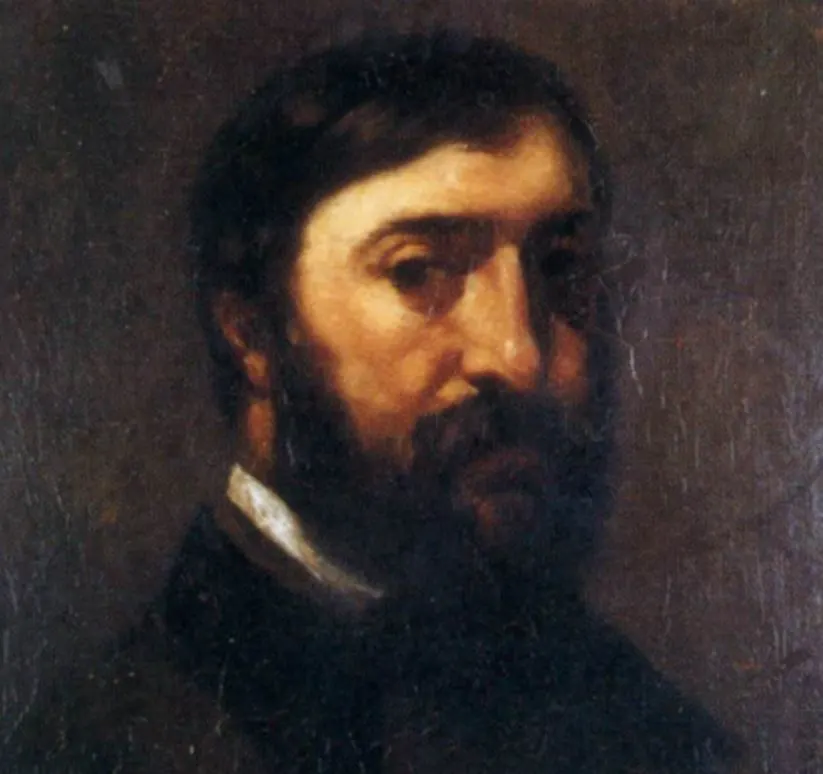
The other people in the painting have been identified as Régis Courbet (left), the artist’s father, and Marlet, the man who is lighting his pipe.
The man playing the violin was Alphonse Promayet, a violinist who was a childhood friend of Gustave Courbet.
It was November, we were at our friend Cuenot’s house, Marlet had returned from hunting and we had engaged Promayet to play the violin before my father.
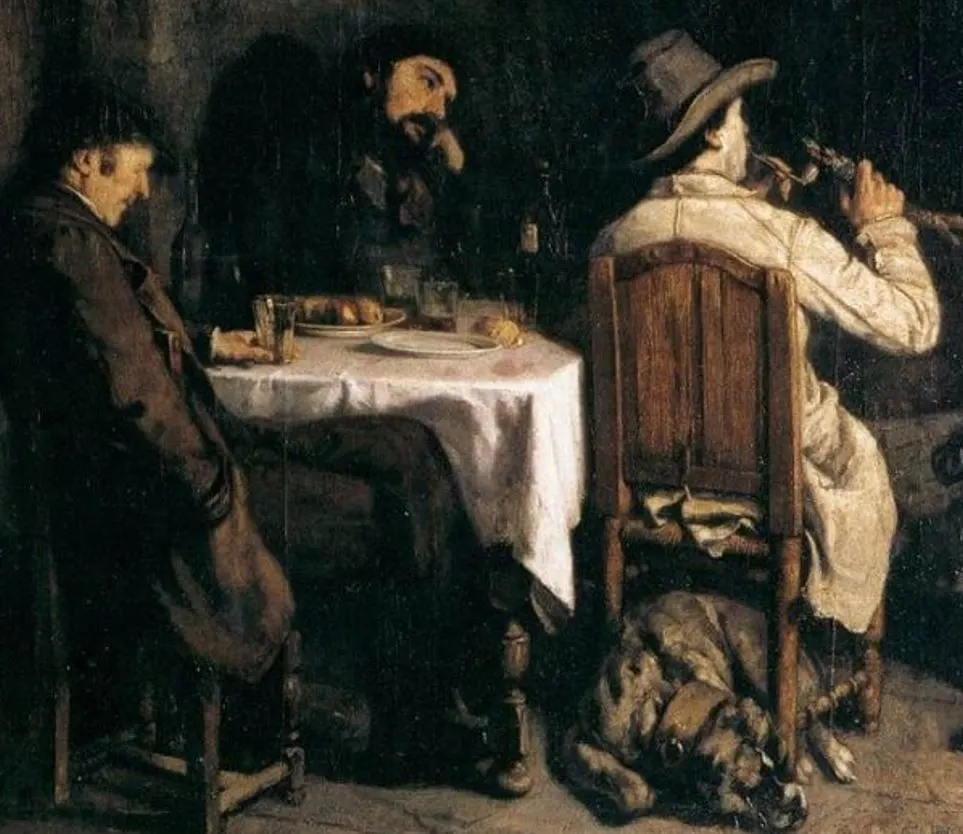
4. The painting shows the influence of a Dutch master on Courbet’s oeuvre
One of the most defining moments in the career of Gustave Courbet was a trip to Belgium and the Netherlands in 1846 and 1847.
He already saw the works of Flemish artists and Dutch Golden Age painters at the Louvre museum in Paris but this trip solidified his artistic ideas.
He was especially inspired by the paintings of Rembrandt, one of the greatest artists in history. The use of light and somber colors in this work exemplifies this.
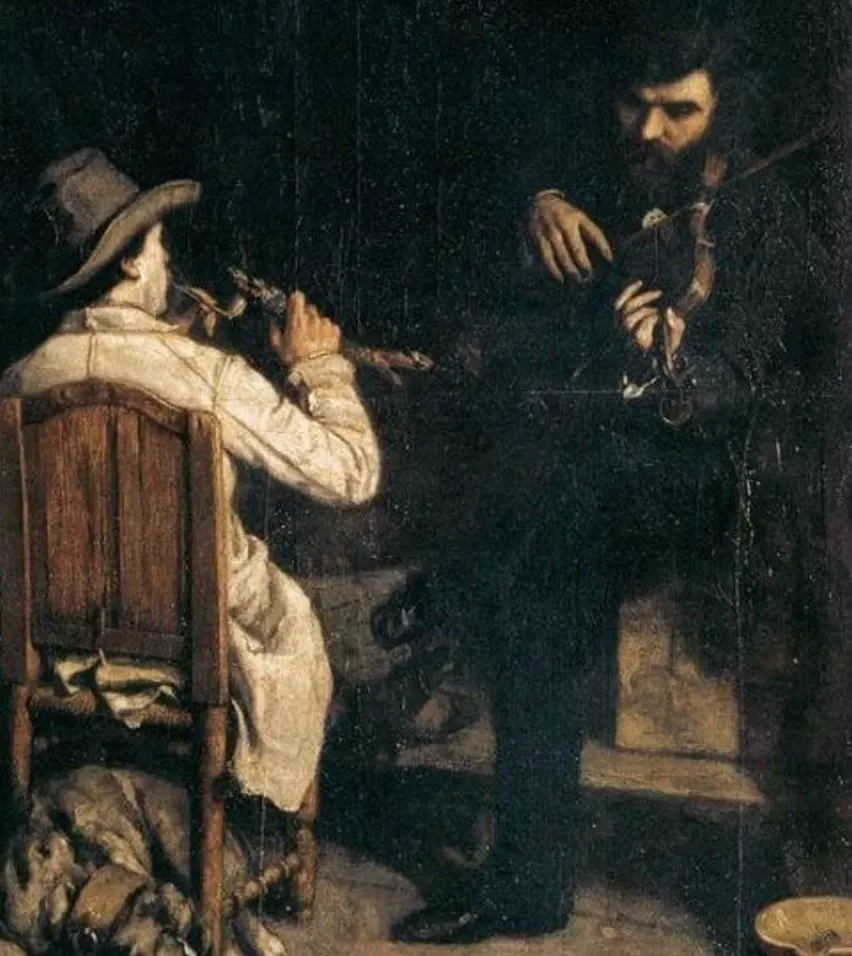
5. It was successful at the Paris Salon in 1849 for a particular reason
His attempt to produce a rustic atmosphere in a small countryside town certainly worked out very well and this was one of the reasons why the work was so admired.
It was displayed at the Paris Salon of 1849, the year it was completed, and became a big success. It even won Courbet the gold medal at the Salon, something he could only dream of beforehand.
Even though Jean-Auguste-Dominique Ingres (1780-1867) referred to it as a “dangerous work,” many other artists including Eugène Delacroix (1798-1863) were very excited about Courbet’s painting.
Delacroix reportedly said:
Have you ever seen anything like it, seen anything so strong? He is an innovator, a revolutionary!
His gold medal allowed Courbet to earn the privilege to submit paintings to the Salon without jury approval. This rule was changed in 1857, though, and he lost this benefit.
He had another great success in 1850 with a painting titled “The Stone Cutters,” a work that was destroyed during World War II which was considered to be one of his most renowned paintings.

6. Pierre-Auguste Renoir paid hommage to Courbet’s painting in 1866
Courbet’s masterpiece was admired by many artists of future generations. He marked the bridge between Realism and Impressionism, mainly because of the fact that he didn’t care about academic rules.
His artistic independence inspired Impressionist artists and eventually also Avant-Garde artists at the end of the 19th century.
One of Renoir’s paintings titled Mother Anthony’s Tavern (1866) can be described as an hommage to Courbet’s work.
It was one of Renoir’s first major works as he completed it at the age of 25, shortly before the developed the typical Impressionist style. It’s on display at the Nationalmuseum in Stockholm.
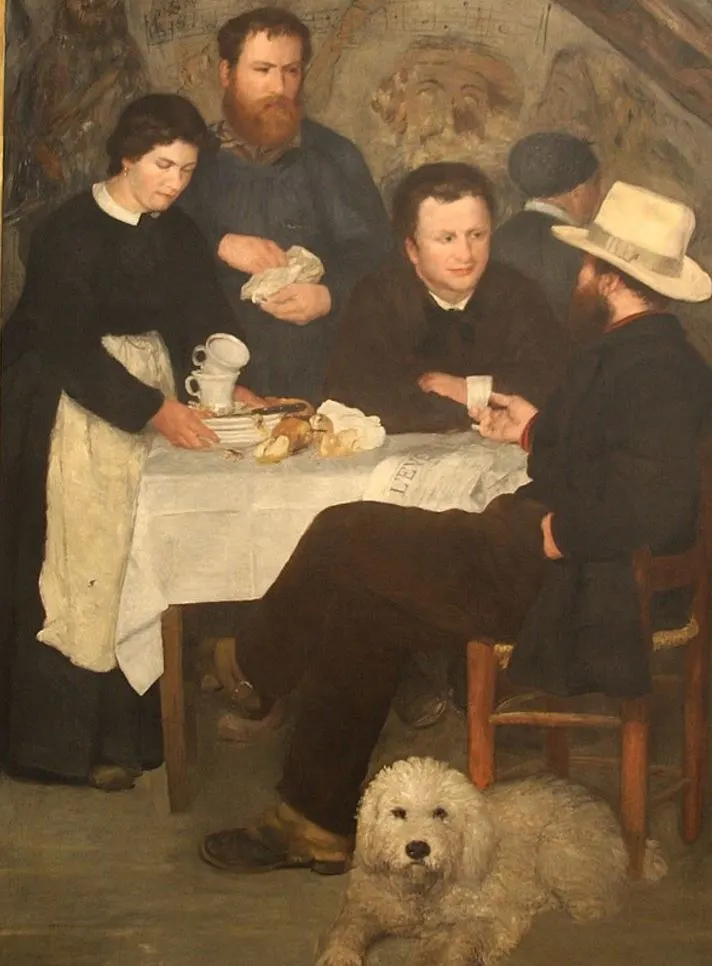
7. How big is After Dinner at Ornans by Gustave Courbet?
The most remarkable fact about Courbet’s painting is that he painted a mundane scene at a monumental scale. Works like these were usually painted in a much smaller format.
After Dinner at Ornans (1848-1849) by Gustave Courbet is a large oil on canvas painting that has dimensions of 195 x 275 centimeters (76.7 x 108.2 inches).
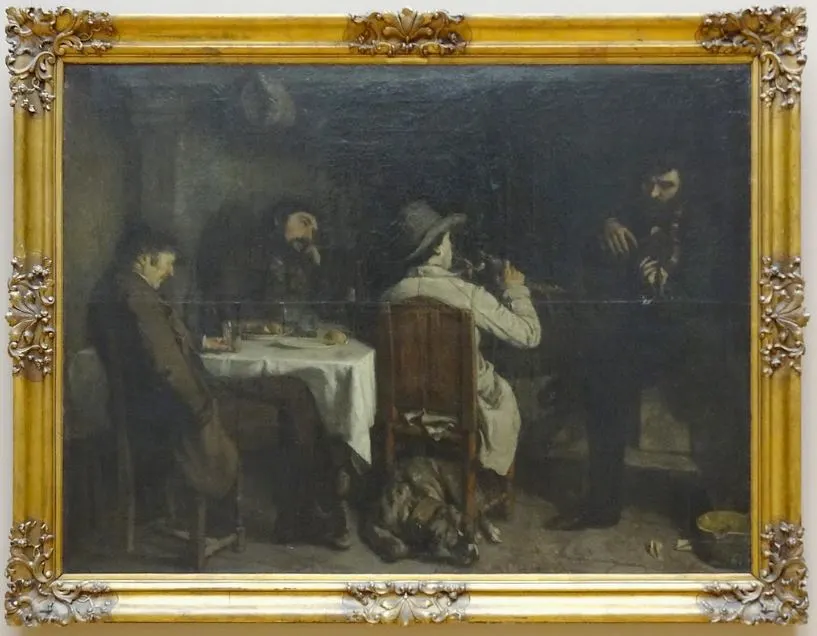
8. Where is Courbet’s painting located today?
The painting is one of the most famous artworks at the Palais des Beaux-Arts de Lille, a museum that was established during the reign of Napoleon I in 1809.
It was acquired by the museum following the success of the Paris Salon of 1849 and hung at the former church that held the collection at the time.
Today, this amazing museum is housed in a Baroque Revival building that first opened its doors in 1885, about 8 years after Courbet passed away.

